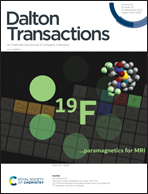Nitrogen doped CoP on ammoniated black phosphorus nanosheets enabling highly efficient hydrogen evolution electrocatalysis†
Abstract
Developing a rational and cost-effective approach for designing highly-efficient and sustainable electrocatalysts is essential for clean and renewable hydrogen energy. Herein, we report nitrogen-doped CoP on two-dimensional ammoniated black phosphorus (BP) nanosheets (N-CoP/NH2-BP) as novel and highly-active heterostructure electrocatalysts for the hydrogen evolution reaction (HER). Using the reactive defects on the BP nanosheets as the original sites under NH3 gas, N-doped CoP nanocrystals were grown on the surface of the BP nanosheets that were functionalized with NH2 groups at their edge. The N-CoP/NH2-BP heterostructure exhibits low overpotentials of 90 and 246 mV at 10 and 200 mA cm−2, respectively, in an alkaline electrolyte. The excellent HER activity should be attributed to the synergistic effect between N-doped CoP and NH2-functionalized BP, in which NH2-BP, with its high electron mobility and hydrophilicity, accelerates the charge transfer and offers more active sites, moreover, N-doped CoP modulates the electronic structure of CoP for enhanced HER activity. This work not only provides a novel and effective electrocatalyst, but also opens up a straightforward strategy for the design of phosphorene-based electrocatalysts for highly efficient hydrogen evolution and beyond.



 Please wait while we load your content...
Please wait while we load your content...